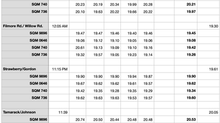Transit of Mercury is Underway
- Chuck Bueter
- May 9, 2016
- 2 min read
The 2016 transit of Mercury is underway. Unfortunately, from my perspective in the Midwest, so are rain showers and heavy clouds. Live programming is available from Slooh all day and from other sites intermittently. Because it takes over seven hours for Mercury to pass in front of the sun, we still have a chance here to get a glimpse through an opening in clouds until the transit ends at 2:41p.m. EDT. Check my Facebook page for updates on where I'll be with solar-filtered telescopes for public viewing.
My telescopes, solar filters, Sun Funnel, handouts, and other public outreach material are all packed in my car, ready to go. The good news: I got a cool t-shirt at the Michiana Star Party 8 that depicts the transit, adapted from an 1852 illustration Durchgang des Merkur by Wilhelm Nitschke. Let's hope for clearing skies.

A 2016 Transit of Mercury animation suggests the apparent path of Mercury across the sun, as seen from South Bend, IN. From an earth-centered perspective, as commonly depicted, Mercury moves diagonally "left to bottom right" across the sun.
On May 9, 2016, the planet diameter appears 158 times smaller than the sun's diamete, or a mere 12 arc-seconds across. For comparison, Venus is about 60 arc-seconds (one arc-minute) across, and the sun is about 30 arc-minutes (half a degree) across.
Visually this is not a dazzling sight in a small telescope—just a tiny dot of a planet against a small circle of a sun. But if you can appreciate that you are looking at the solar system in motion, and you consider the immensity of the sun compared to the planet Mercury, the observation has more impact. If we’re lucky, we can see some sunspots, too.
I anticipated setting up a filtered telescope in a field in Granger, IN, for the start of the transit, then moving to a public site (or multiple sites) with more passers-by.
In South Bend, IN, the transit of Mercury begins around 07:13:30 EDT, when the sun is fewer than 7 degrees above the horizon (sunrise at 6:31 a.m.) toward the east. The transit ends shortly after 2:41 p.m. when the sun is 63 degrees above the horizon in the southwest.
But first, we need an opening in the clouds.









































